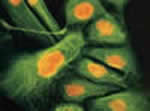David C. Pfeiffer, Ph.D.
Associate Professor of Biological Sciences
Department of Biological Sciences
University of Alaska Anchorage

|
Biographical
Information
Postdoctoral research, University of Utah
Department of Biology
Ph.D./Anatomy 1997
University of British Columbia, Canada
M.Sc./Anatomy 1990
University of British Columbia, Canada
B.A./Biological Sciences 1987
University of North Carolina Charlotte, NC
|
GENERAL RESEARCH INTERESTS:
Much of the research interest of my laboratory falls within the field
of functional morphology - the study of the structural and functional
adaptations organisms display in relation to the environments in which
they live. We approach morphology from the molecular and cellular levels
of organization through the tissue level of organization. Frequently we
look to the field of physiology in order to fully explain the particular
adaptations of a cell, tissue and/or entire organism. On-going projects
in my laboratory are focused on topics such as the physiology of stress
in marine mammals (the structural and functional changes brought on by
short-term or long-term stress), thermoregulation in the walrus (structural/functional
adaptations for temperature regulation), and the comparative cell biology
of adhesion junctions (evolution of different strategies for intercellular
adhesion).
CURRENT RESEARCH PROJECTS:
The Physiology of Stress in Marine Mammals
Exaggerated stress-induced responses in stranded marine mammals often
lead to cell or tissue-level injury and contribute to the overall deterioration
and/or death of many animals. We are interested in understanding more
fully the structural/functional basis of the stress response (alarm response)
in cetaceans. We are studying the short-term responses and long-term adaptations
to stress in small cetaceans such as the Atlantic bottlenose dolphin (Tursiops
truncatus). Funded by grants from the National Oceanic and Atmospheric
Administration/National Marine Fisheries Service
Thermoregulation in the Walrus
The walrus is a master when it comes to temperature regulation.
The walrus is essentially "naked" (lacks a protective pelage),
yet during winter months it is able to haul out on ice in temperatures
as low as -30oC without developing frostbite. During summer months it
is able to haul out on sun-warmed rocks (as warm as 25oC) without succumbing
to hyperthermia. We are interested in the underlying structural and functional
adaptations that permit the walrus to thermoregulate in the temperature
extremes of its arctic environment. Funded by a UAA Faculty Development
Grant
Comparative Cell Biology of Adhesion Junctions
One of the fundamental requirements for multicellular organization
is that cells must possess mechanisms for intercellular adhesion; that
is, cells must be able to selectively establish and maintain attachment
sites with one another. A variety of mechanisms have evolved that meet
this demand. One common mechanism involves the incorporation of elements
of the cell's cytoskeleton into the process of intercellular adhesion
at well-defined junction sites (adherens junctions, desmosomes). We are
interested in how cells construct and maintain intercellular junctions
as well as how different strategies for adhesion have evolved in different
classes of vertebrates. Much of our interest has focused on intercellular
adhesion mechanisms within the seminiferous epithelium of the male reproductive
tract. Here some very unusual strategies for intercellular adhesion have
evolved. Funded by a UAA Faculty Development Grant
| 
